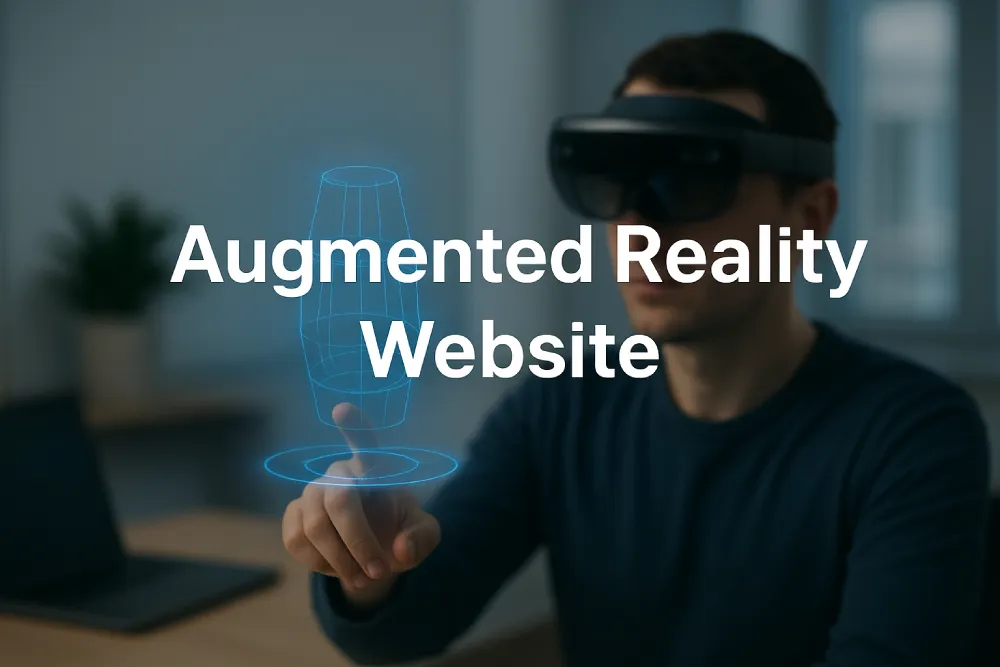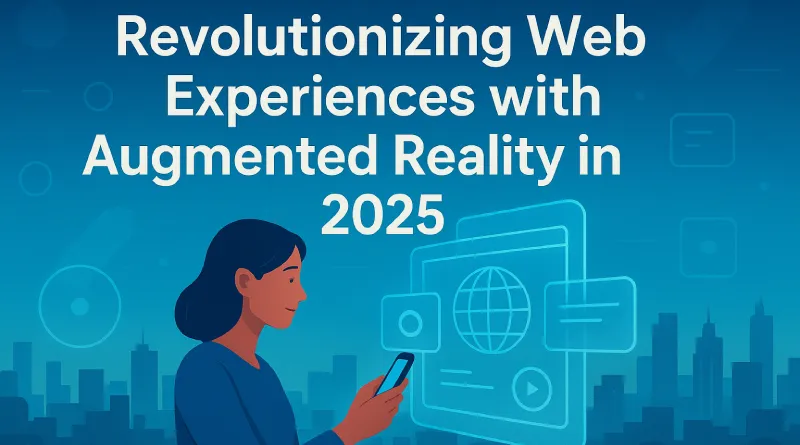Revolutionizing Web Experiences with Augmented Reality in 2025
Augmented Reality (AR) is transforming web design, creating immersive and interactive experiences that captivate users. As we move into 2025, AR integration is a key trend, blending digital elements with the real world to enhance user engagement. This article explores how AR is reshaping web design, offering unique insights, local context, and data-driven trends to help businesses stay ahead in the digital landscape.
The Power of AR in Web Design
AR enhances websites by overlaying digital elements—like 3D models or interactive visuals—onto a user’s real-world environment, accessible via browsers or mobile devices. Unlike Virtual Reality (VR), AR doesn’t require specialized hardware, making it widely accessible. According to Statista, AR in e-commerce is projected to generate $120 billion globally by 2025, with websites leveraging AR to boost engagement. For instance, AR allows users to visualize products, such as trying on glasses or previewing furniture, increasing conversion rates by up to 40%, per Shopify.
Top AR Features for Websites
- 1. Interactive Product Visualizations: Retail websites are adopting AR to offer virtual try-ons. Brands like L’Oréal use AR to let users test makeup shades, while furniture retailers enable room visualizations. Tools like WebAR and AR.js make these features browser-friendly, reducing reliance on apps.
- 2. Enhanced Learning Experiences: Educational platforms integrate AR to create interactive lessons. For example, history websites can display 3D historical artifacts, improving user engagement by 30%, according to EdTech Magazine.
- 3. Gamified User Journeys: AR gamification, such as virtual treasure hunts or interactive brand stories, keeps users on-site longer. HubSpot reports a 35% increase in time-on-page for AR-enhanced websites.

Local Context: AR in India’s Digital Landscape
In India, where mobile internet users number over 800 million (per TRAI), AR websites are gaining traction in urban centers like Mumbai and Delhi. Local e-commerce platforms are using AR to offer virtual try-ons for traditional attire like sarees, resonating with cultural preferences. However, challenges like varying device capabilities and data costs persist. Developers are addressing this by optimizing AR for mid-range smartphones, ensuring accessibility for 65% of India’s mobile users.
Unique Insights: Challenges and Opportunities
While AR enhances user experiences, high development costs and browser compatibility issues can hinder adoption. Lightweight frameworks like 8th Wall are bridging this gap, enabling seamless AR integration. For AdSense compliance, websites must prioritize fast load times and non-intrusive AR elements to avoid disrupting user experience.
Why AR Matters
AR-driven websites create memorable, interactive experiences that set brands apart. By offering personalized, engaging content, businesses can boost conversions and user retention. As AR technology evolves, 2025 will see more websites harnessing its potential to deliver value-driven, localized experiences that captivate users and align with Google’s standards.
Disclaimer
The information presented in this blog is derived from publicly available sources for general use, including any cited references. While we strive to mention credible sources whenever possible, Web Design Agency in Mumbai does not guarantee the accuracy of the information provided in any way. This article is intended solely for general informational purposes. It should be understood that it does not constitute legal advice and does not aim to serve as such. If any individual(s) make decisions based on the information in this article without verifying the facts, we explicitly reject any liability that may arise as a result. We recommend that readers seek separate guidance regarding any specific information provided here.

